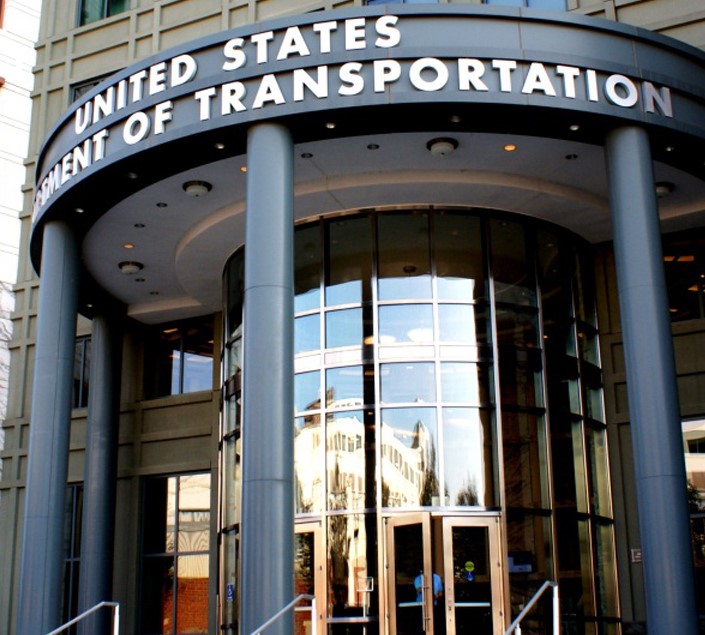U.S. Department of Transportation Announces $513.2 Million in Emergency Relief for Roads and Bridges Damaged by Natural Disaster and Catastrophic Events

Funds help states address ongoing impacts of climate change and severe weather
In an ongoing effort to help states repair and rebuild critical infrastructure that resident and businesses rely on following extreme weather events that are becoming more frequent, hard to predict, and severe due to changing climate, the U.S. Department of Transportation’s (USDOT) Federal Highway Administration (FHWA) today announced that it will provide $513.2 million in Emergency Relief (ER) Program funds to help 30 states, the District of Columbia and Puerto Rico make repairs to roads and bridges damaged by storms, floods, wildfires and other events in recent years.
“These funds with help communities across our nation repair roads and bridges damaged by severe weather events, which are becoming increasingly common because of climate change,” said U.S. Transportation Secretary Pete Buttigieg. “From recent hurricanes that struck the Gulf Coast, to wildfires in California and floods and mudslides in numerous states, we must address the devastating impacts of climate change and work to build more sustainable transportation infrastructure to better withstand its impacts for years to come.”
“Climate change impacts the lives of Americans on a daily basis and has increasingly meant that our nation’s transportation infrastructure is facing more frequent and unpredictable damage from severe weather events,” Acting Federal Highway Administrator Stephanie Pollack said. “The Emergency Relief funding the Administration is announcing today will overwhelmingly go toward repairing damage to roads and bridges relied upon by communities across the country.”
See related articles: U.S. Department of Transportation Providing National Park Service $11.7 Million in ‘Quick Release’ Emergency Relief Funding to Repair Flood Damage in Death Valley National Park, U.S. Department of Transportation Provides $65 Million in ‘Quick Release’ Emergency Relief Funding to Repair Flood Damage in Yellowstone National Park, Montana and Wyoming
The bulk of FHWA’s Emergency Relief funding goes toward reimbursement for states, territories, federal land management agencies, and tribal governments to fix and restore roads and bridges in the aftermath of wildfires, hurricanes, flooding and other weather-related events, including Hurricane Ida damage in several states and California wildfires. Additional funding is available to repair or replace structures due to catastrophic failure from external causes, such as the pedestrian bridge in Washington, D.C., over Route 295 that collapsed when a truck hit the bridge in June 2021.
The Emergency Relief program complements the Biden-Harris Administration’s comprehensive approach to combatting climate change and mitigating its ongoing effects by encouraging transportation agencies to identify and implement measures that make restored infrastructure more resilient and better able to withstand damage from future events. Specifically, the Bipartisan Infrastructure Law addresses the future resiliency of transportation infrastructure in the face of climate change through new programs and expanded eligibilities, including the Promoting Resilient Operations for Transformative, Efficient, and Cost-saving Transportation (PROTECT) program. The PROTECT program will advance the use of materials and structural techniques to ensure highways are better prepared to withstand extreme events.
FHWA is taking additional steps to tackle climate change by updating its Emergency Relief Manual for 2022 to spotlight the program’s impact on improvements to system resilience. The agency has also embarked on a rulemaking to amend the FHWA Emergency Relief program regulations to incorporate climate resiliency while making it possible to use more ER funds toward improving system resilience.
The Fiscal Year 2022 allocation provides funding for continued repairs from the 2015 and 2016 California Winter Storms, 2017 Hurricanes Irma and Maria, 2020 Michigan Spring Flooding and recent Arkansas flooding and Alabama tornadoes. A listing of FY 2022 Emergency Relief Program allocations with funding information for each state, the District of Columbia and Puerto Rico can be found here. This is the second allocation in FY 2022 bringing the total to more than $1.9 billion.
Source: U.S. Department of Transportation










